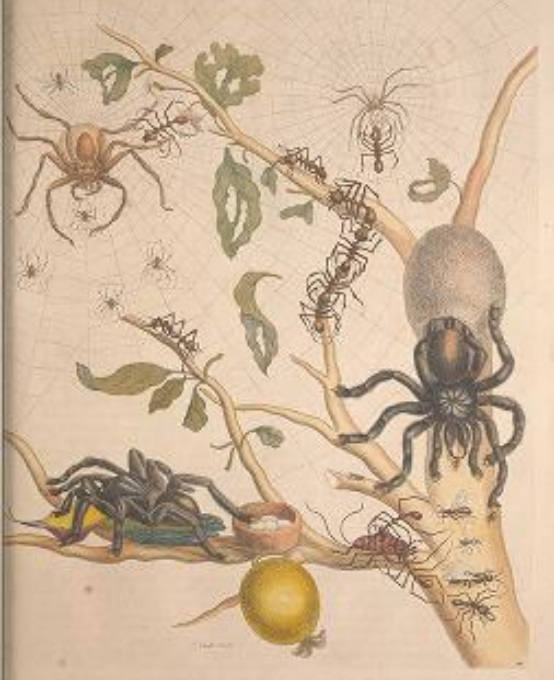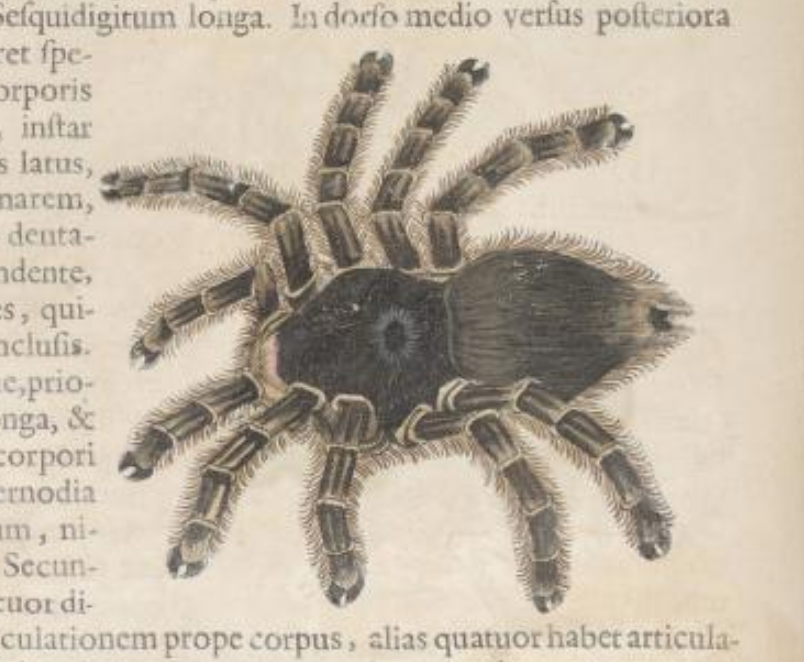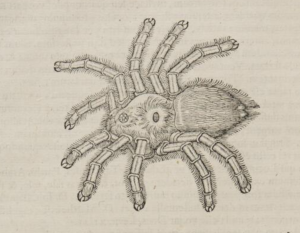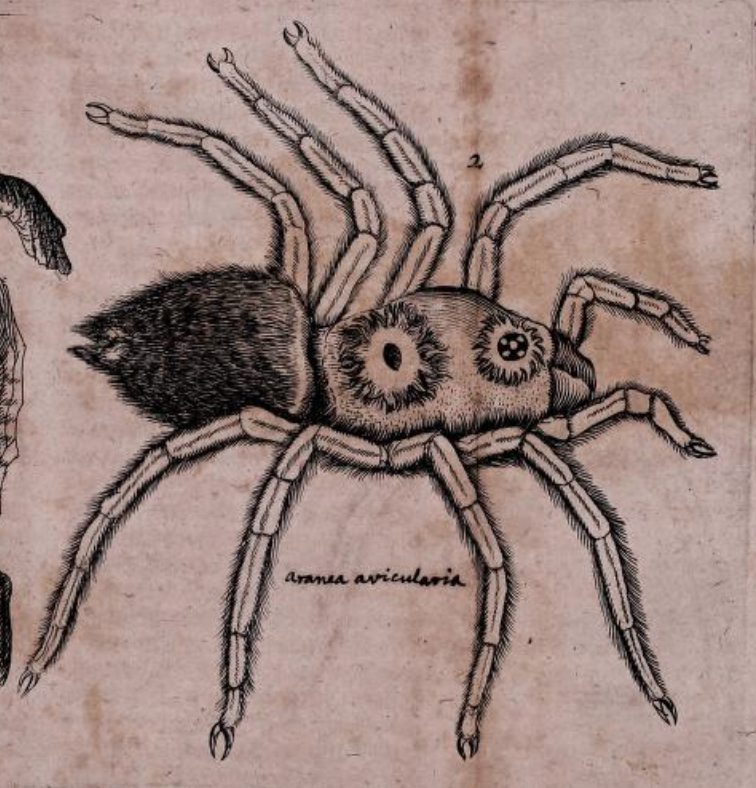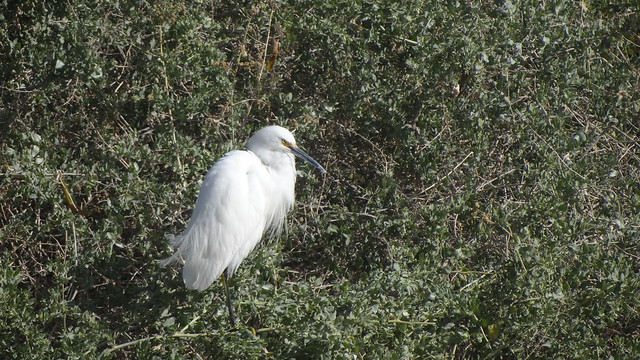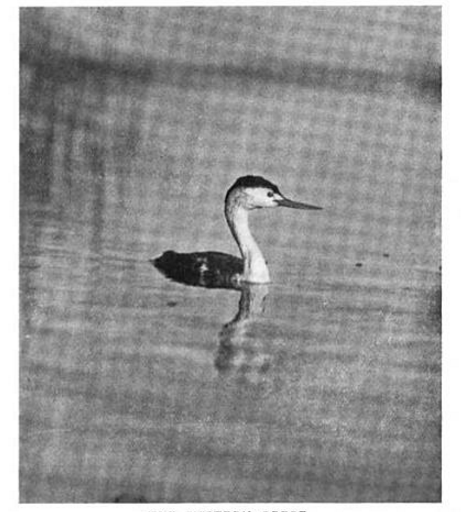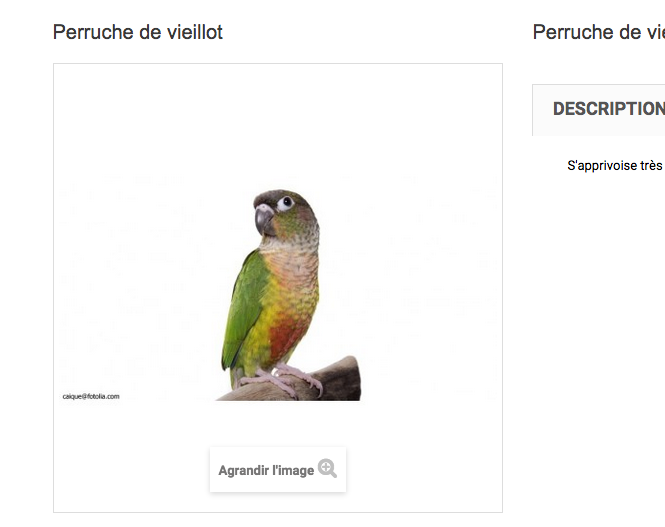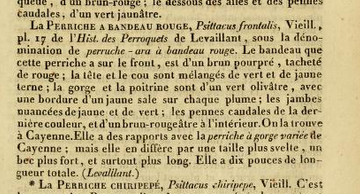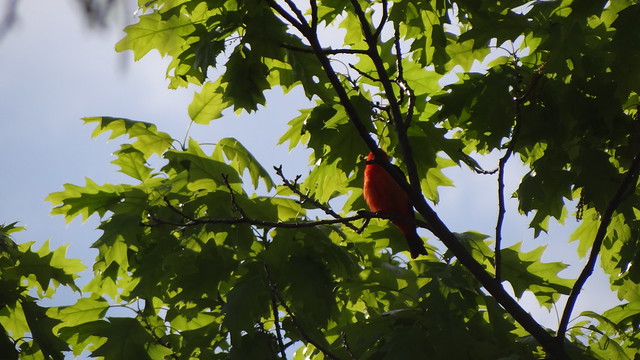Wikipedia strikes again. Or rather, Wikipedia strikes out again.
We are informed (or were informed — I trust that the article will be corrected anon) that
Linnaeus’s name avicularia is derived from the Latin avicula, meaning “little bird,” and refers to a 1705 illustration by Maria Sibylla Merian, showing a tarantula feeding on a bird.
What’s worse, though, is that this bit of garble was obviously the direct source for a recent blog entry that credulously repeats the same naive misapprehension.
It’s quite true that Merian shows a spider eating a bird, and that the pioneering entomologist identifies that bird as a “Colibritgen,” a hummingbird. There is no indication in her text, however, that the striking plate “illustrates a real event that she witnessed in Suriname.” And Linnaeus’s inspiration for the name avicularia in fact antedates Merian’s work by some decades.
A look at the original description of Linnaeus’s Aranea avicularia — rather than at Wikipedia — reveals that Merian’s work was simply one of the several illustrated natural history sources the Archiater consulted. (You can click on the pictures.)
And one of those sources, Adam Olearius’s 1674 catalogue of Duke Frederick III’s Kunstkammer Gottorf Castle in Schlewsig-Holstein, labels its big hairy spider Aranea avicularia.
This was twenty-five years before Merian undertook her groundbreaking expedition to the Guyanas, and more than three decades before she published the greatest of all early modern entomologies.
All well and good — but what about the behavior behind the spider’s grimly humorous epithet avicularia, “the birdkeeper”?
The existential battle between hummingbirds and spiders is a commonplace in nearly all of the early European literature about the little birds, from the sixteenth century on. No one before or since has depicted it as dramatically as Sybilla Merian, but to suggest that she discovered the phenomenon is wrong — especially given the modest parenthetical comment she inserts into her discussion of the hummingbird:
zoo als men my gezegt heeft,
“as they have told me.”
Aren’t her real accomplishments enough without adding fictional deeds to them?

